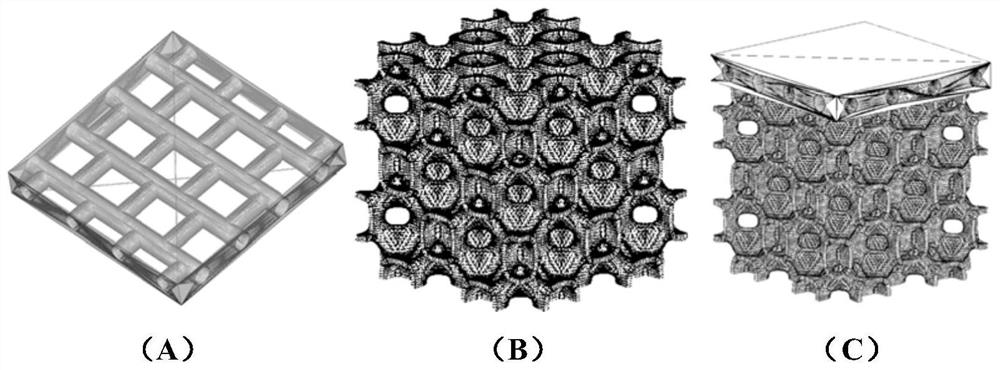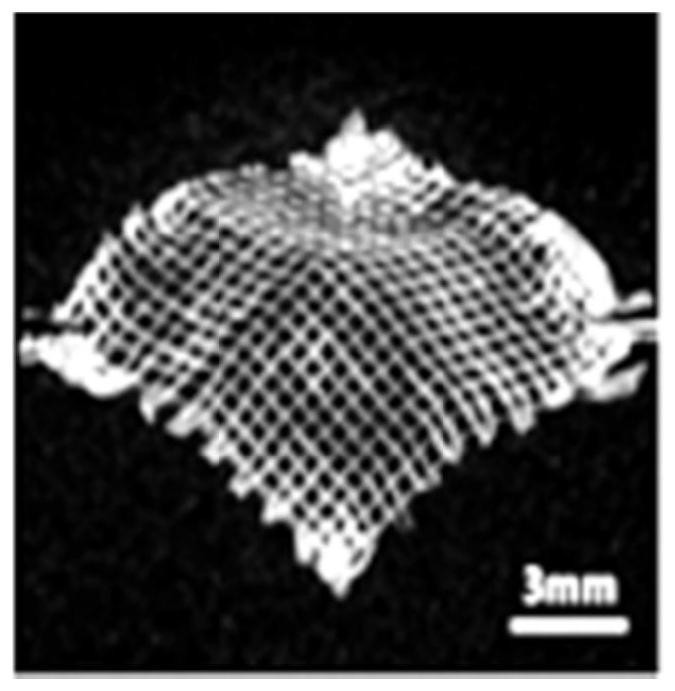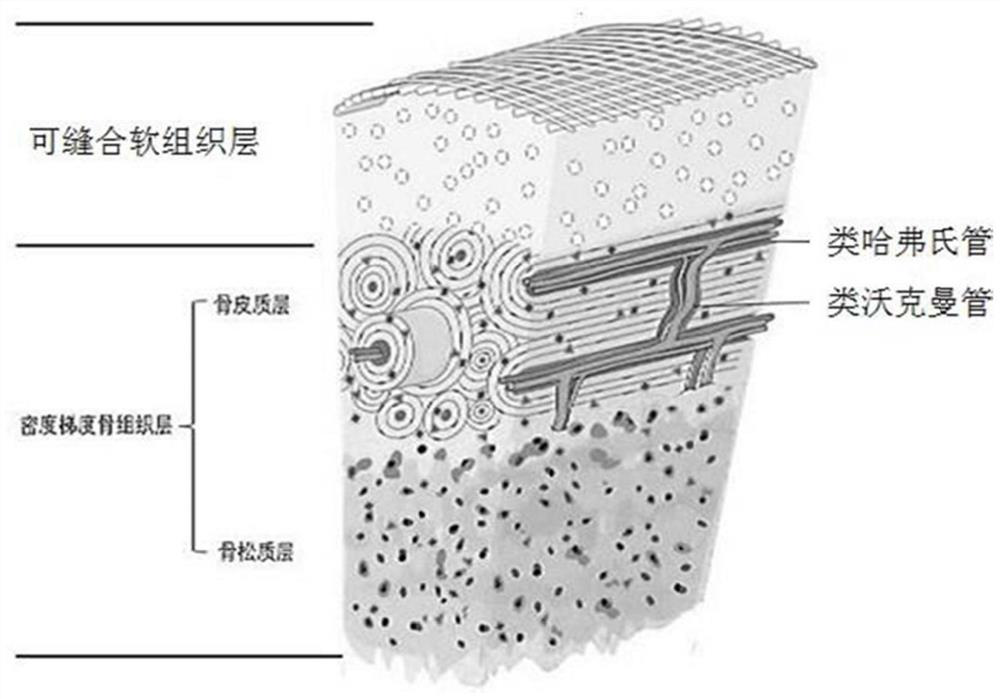Preparation method of a super bionic soft and hard tissue composite scaffold
A composite scaffold and tissue technology, applied in biochemical equipment and methods, tissue regeneration, tissue culture, etc., can solve the problems of only focusing on morphological reconstruction, no risk of heterologous cell immunogenicity, etc., to avoid immunogens. Sexual problems, the effect that is conducive to clinical transformation
- Summary
- Abstract
- Description
- Claims
- Application Information
AI Technical Summary
Problems solved by technology
Method used
Image
Examples
Embodiment Construction
[0033] The present invention will be further elaborated and illustrated below in conjunction with the accompanying drawings and specific embodiments. The technical features of the various implementations in the present invention can be combined accordingly on the premise that there is no conflict with each other.
[0034] The invention provides a method for preparing a super bionic soft and hard tissue composite scaffold, the specific steps of the preparation method are as follows:
[0035] 1) Design bionic bone tissue scaffold:
[0036] The microstructure of the jaw tissue was simulated by three-dimensional software (such as SolidWorks software), and the bionic thin-layer cortical bone scaffold model and cancellous bone scaffold model were designed and obtained. like figure 1 As shown, a cortical bone scaffold model (A), a cancellous bone scaffold model (B) and a composite bone tissue scaffold model (C) in an embodiment provided by the present invention are provided. Among...
PUM
 Login to View More
Login to View More Abstract
Description
Claims
Application Information
 Login to View More
Login to View More - R&D
- Intellectual Property
- Life Sciences
- Materials
- Tech Scout
- Unparalleled Data Quality
- Higher Quality Content
- 60% Fewer Hallucinations
Browse by: Latest US Patents, China's latest patents, Technical Efficacy Thesaurus, Application Domain, Technology Topic, Popular Technical Reports.
© 2025 PatSnap. All rights reserved.Legal|Privacy policy|Modern Slavery Act Transparency Statement|Sitemap|About US| Contact US: help@patsnap.com



